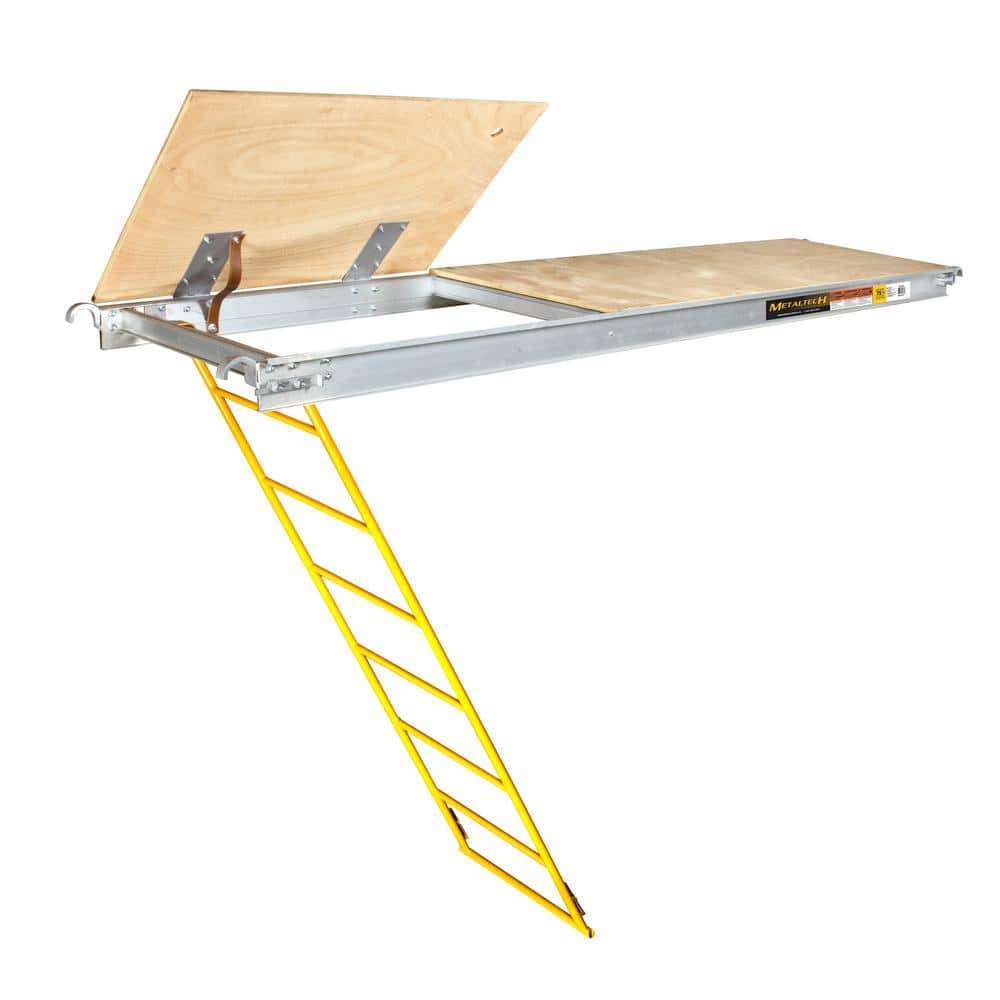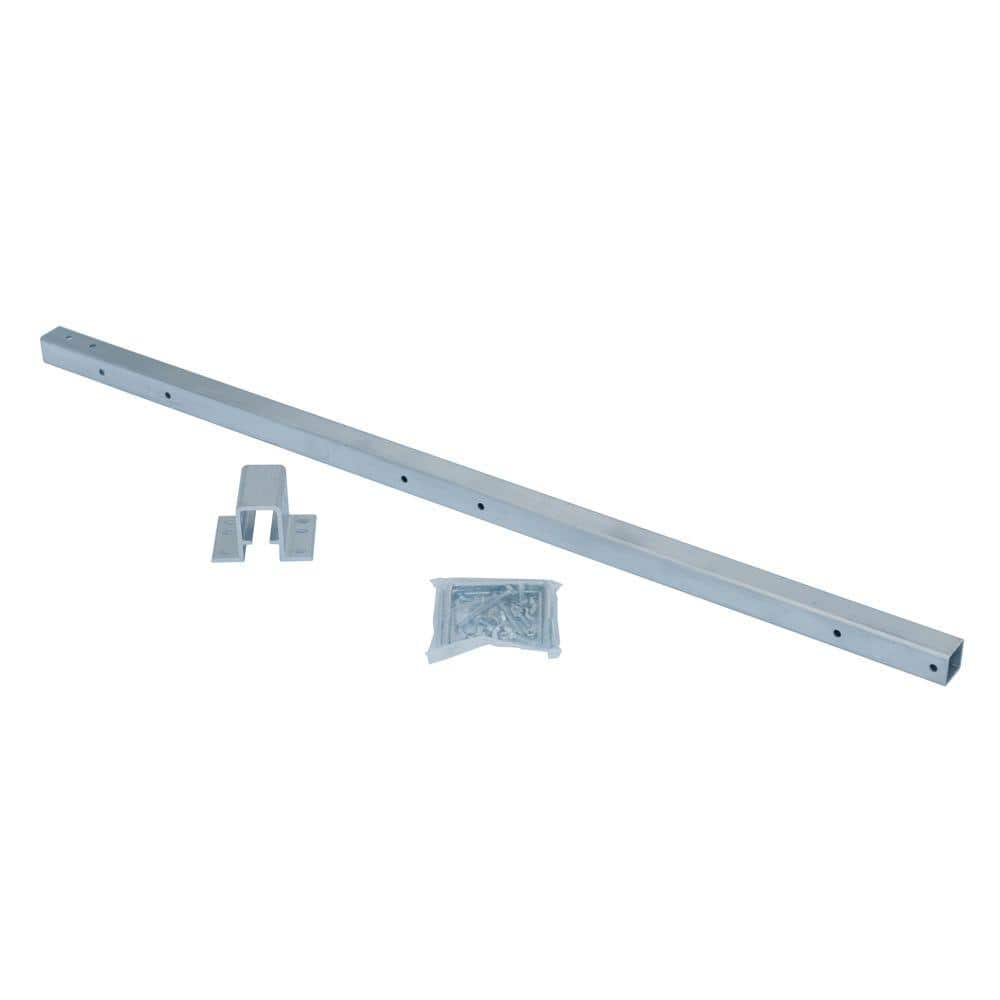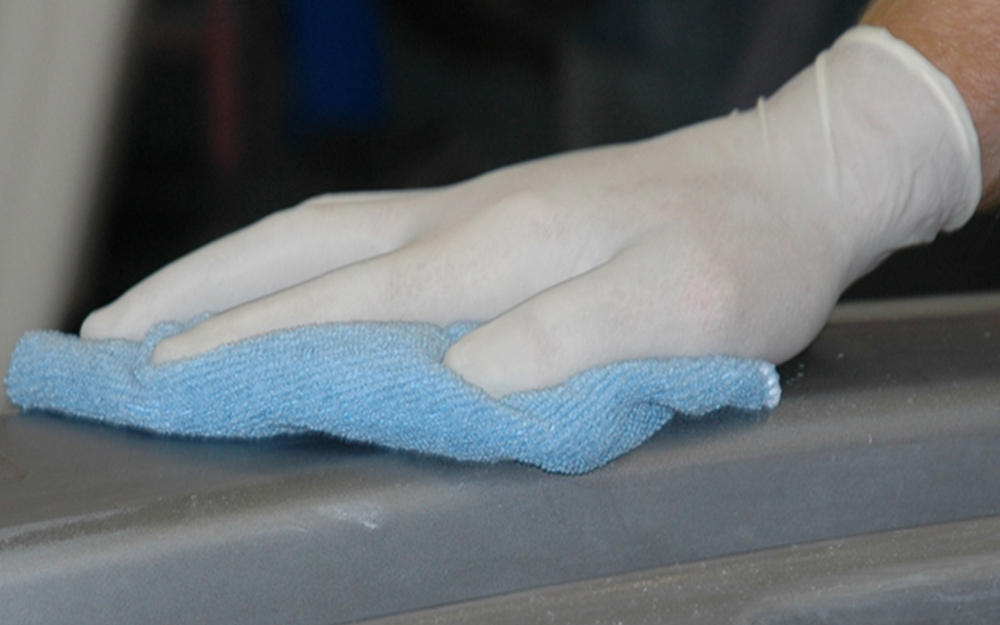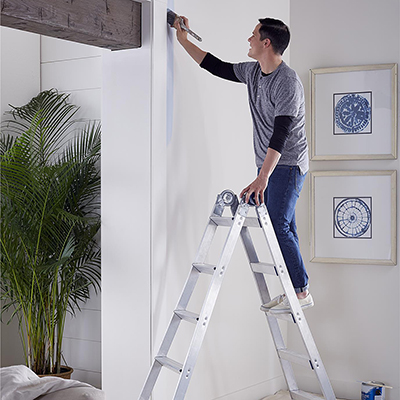OSHA Guardrail & Handrail Requirements
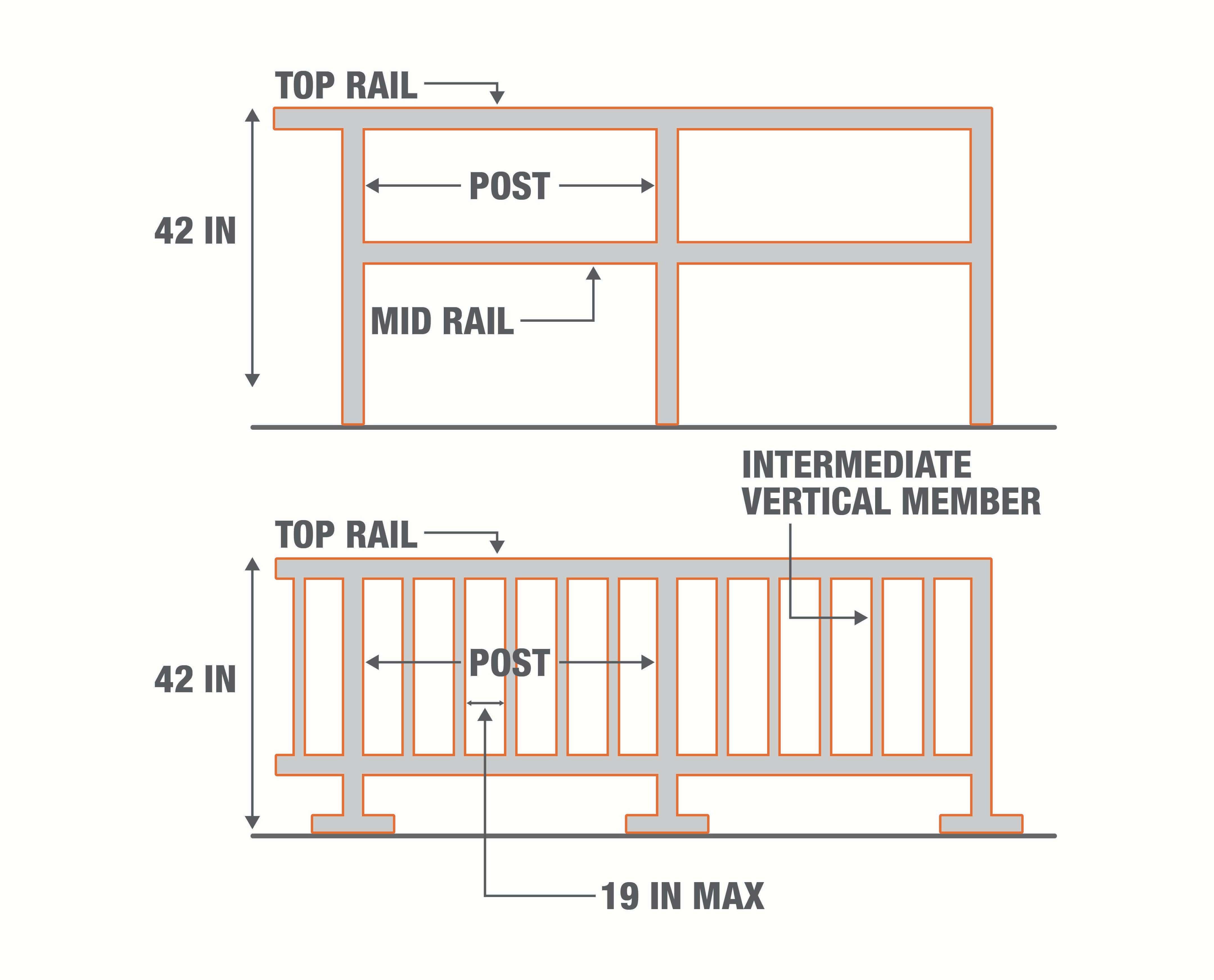
Last updated August 12, 2024
Employers must provide guardrails along any exposed edge of walking-working surfaces 4 feet or higher, according to OSHA regulations. All guardrails must be 42 inches high, nominal. Midrails, screen or panels are required for guardrail systems where there is no wall or parapet at least 21 inches high.
Table of Contents
Nominal Height & Variances for Guardrail Systems
Handrails & Stair Rails
Handrails vs. Guardrails
More Tools. More Products. More Perks.
Nominal Height & Variances for Guardrail Systems
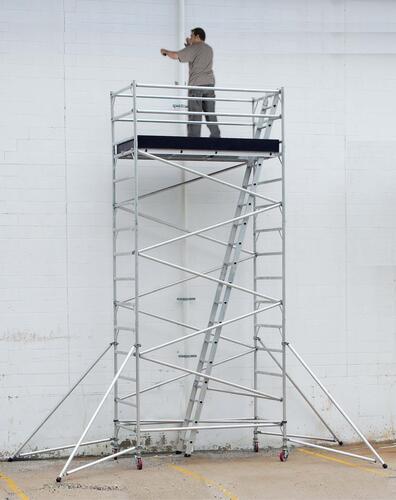
OSHA's guardrail height requirements include a variance of plus or minus 3 inches. Guardrail systems that are not at least 42 inches high can be cited as a technical violation.
Must Withstand 200 Pounds
All guardrail systems must be able to hold at least 200 pounds of pressure pushing out and down on the railing. Downward pressure should not bend railing past 39 inches above its walking-working surface. To test this, apply an appropriate force within 2 inches of the railing's top edge.
Must Be Smooth
Guardrail system surfaces must be smooth. Smooth surfaces help protect personnel from injuries and prevent job-site hazards.
Must Be 1/4 Inch
The minimum thickness for guardrails, midrails and vertical members is 1/4 inch in diameter.
No Overhanging Rails
The ends of top rails and midrails of a guardrail system must not extend past the final post. The only exception to this rule is where the overhang does not present a projection hazard.
Midrails, Panels & Equivalents
OSHA regulations permit midrails, screens, meshes and vertical members in guardrail systems. These members must be able to hold at least 150 pounds of outward and downward pressure, and openings between members must not exceed 19 inches.
- Midrails - installed between the top edge and walking-working surface no more than 19 inches apart
- Screens and meshes - cover the entire opening between the top edge and walking-working surface
- Intermediate vertical members - installed no more than 19 inches apart
- Other equivalent intermediate members - installed with no opening more than 19 inches wide
- Steel and plastic banding - not allowed as top rails or midrails
Handrails & Stair Rails
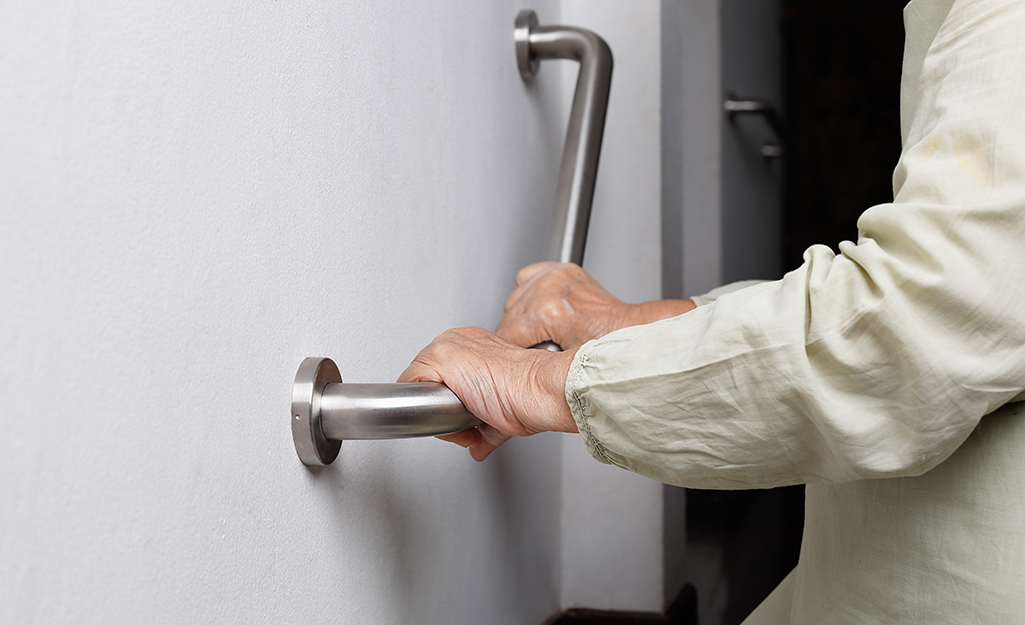
Handrails are part of a fall protection plan. Like guardrails, OSHA regulations provide specific handrail and stair railings requirements.
Handrail Height
Handrails must be 30-38 inches above the leading edge of the stair tread. This is measured from the top surface of the handrail.
Stair Rail Height
Systems mounted before 01/17/2017 must be 30 inches or higher. Systems mounted after 01/17/2017 must be 42 inches or higher. Both measurements are from the leading edge of the stair tread to the top surface of the handrail.
Stair Rails as Handrails
Systems can use stair rails as handrails if they meet strength tolerance, finger clearance, handhold, opening, surface texture and projection hazards requirements. These systems may be mounted 36-38 inches high.
Strength
Handrails must be able to hold 200 pounds of downward or outward pressure. Like guardrails, apply an appropriate force within 2 inches of the railing's top edge to test.
Finger Clearance
There must be at least 2 1/4 inches of clearance between the handrail and any other object or surface. This includes walls and guardrails.
Handhold
Handrails must be of a size and shape so that personnel can grasp rail firmly.
Opening
Like midrails and equivalents, openings in handrail systems must be no more than 19 inches.
Surface Texture
Handrail surfaces must be smooth. Smooth surfaces help protect personnel from injuries and prevent hazards.
Projection Hazard
Handrails and stair rail system ends must not present a projection hazard.
Handrails vs. Guardrails
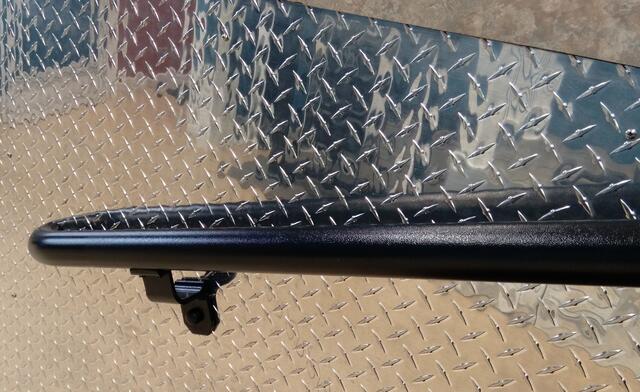
Guardrails are meant to protect personnel and other job-site hazards from falling to lower levels. Handrails are meant to provide support and guidance along stairways and platforms. Both must be smooth to touch and able to withstand 200 lbs. of pressure, though the height requirements vary.
More Tools. More Products. More Perks.
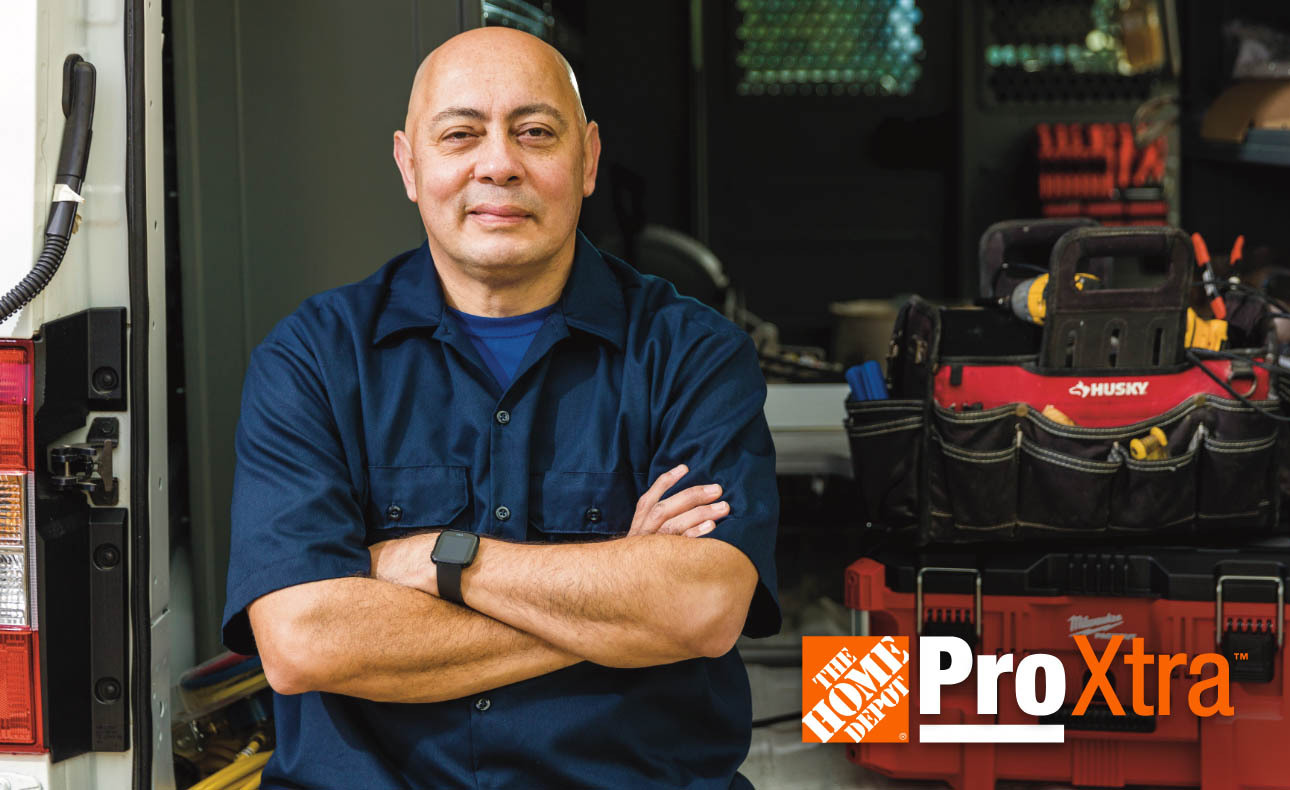
Be more competitive and boost your bottom line with Pro Xtra, The Home Depot’s loyalty program built for Pros. Sign up today to access the enhanced Pro Online Experience, built with the online business tools and time-saving features Pros need.
Make safety your top priority when working at heights. Follow OSHA requirements for guardrails and fall arrest systems.
Build your business and add revenue. Become a Home Services Provider.
Occupational Safety and Health Administration. 1910.29 - Fall Protection Systems and Falling Object Protection-Criteria and Practices. 2019



